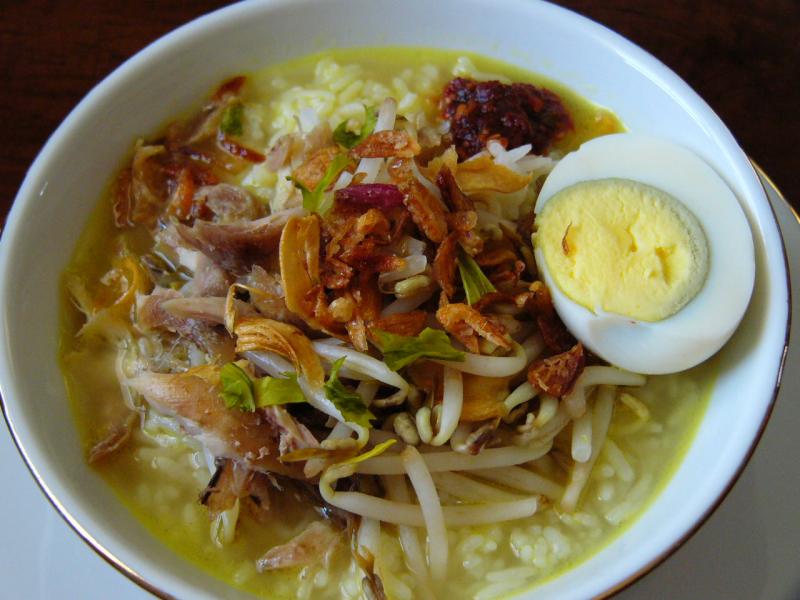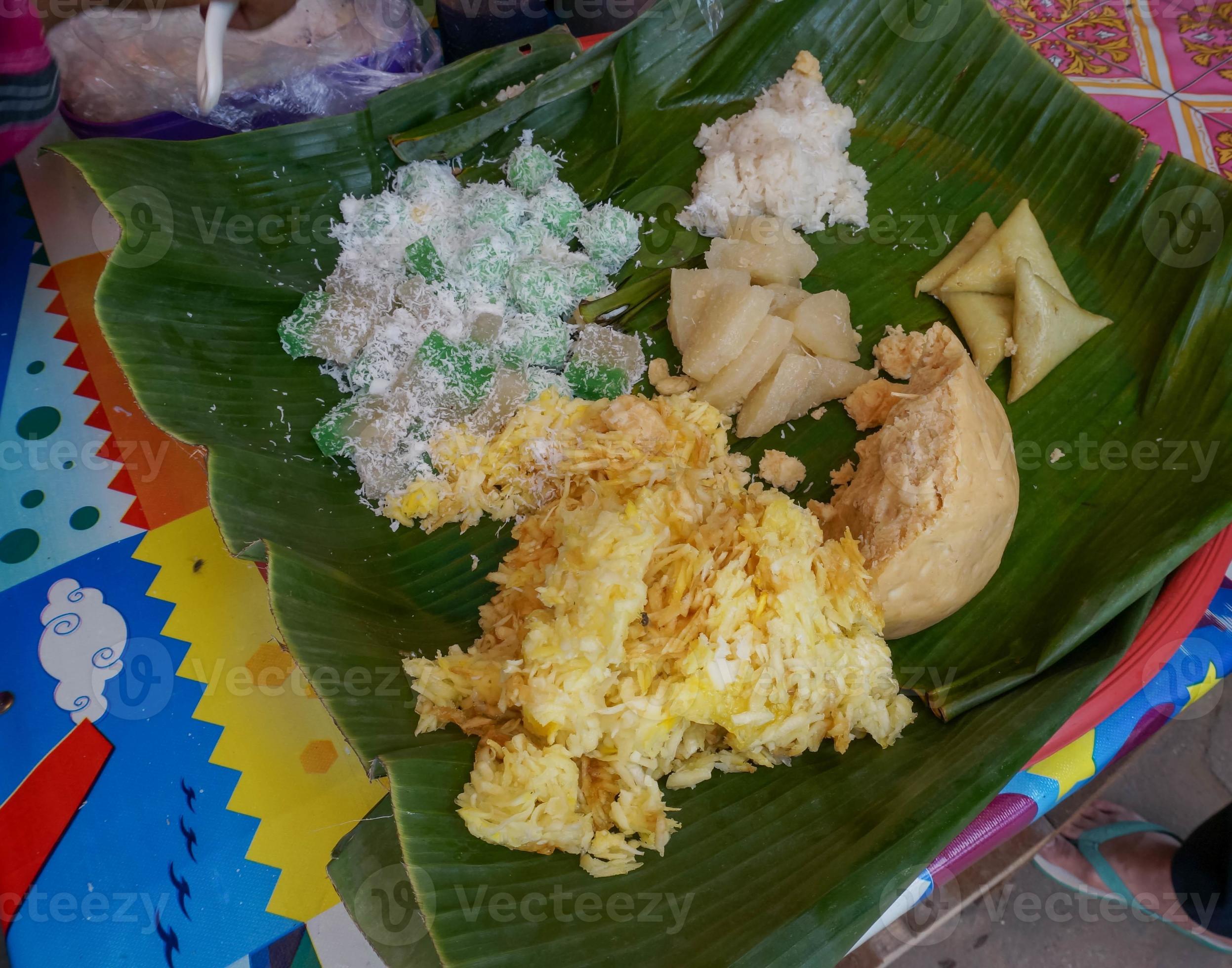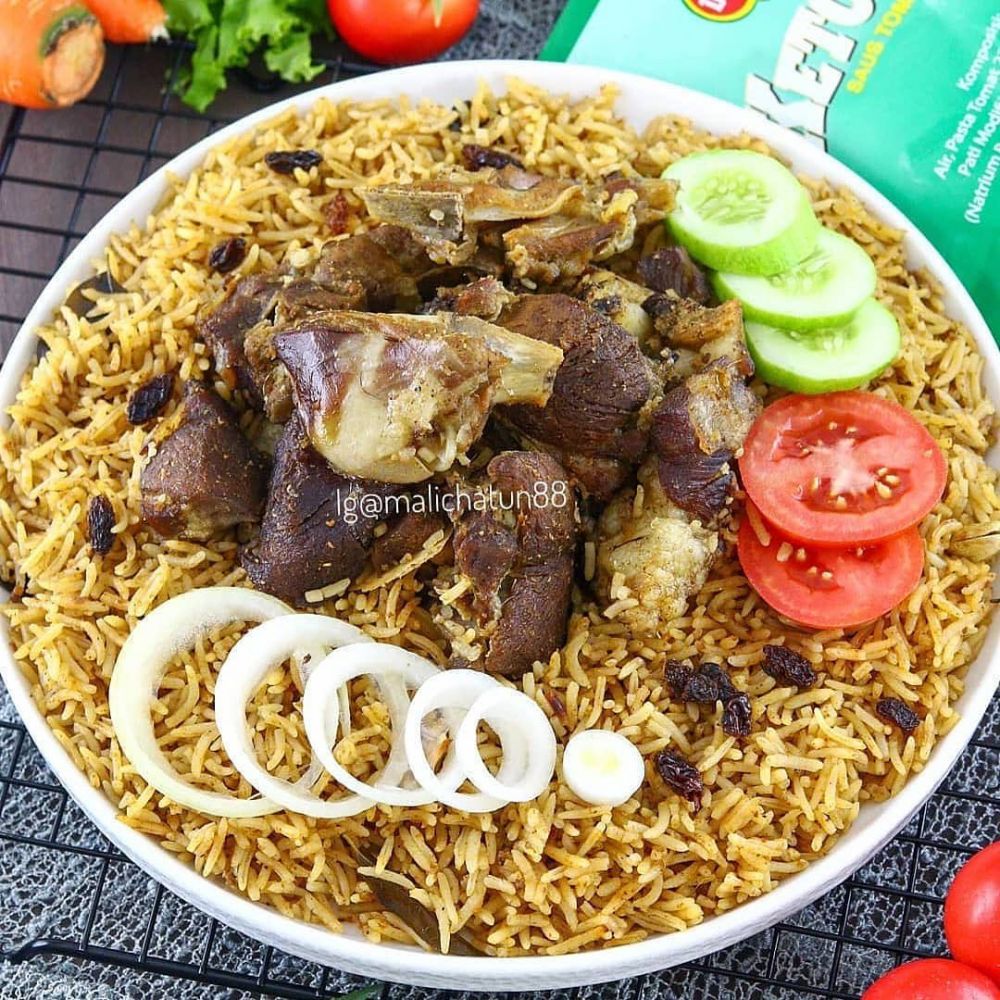
Nasi Kebuli: A Royal Feast and an Aromatic Legacy on a Plate
In the vast, vibrant tapestry of Indonesian cuisine, few dishes command the same reverence and sensory delight as Nasi Kebuli. It is not merely a meal; it is an event, a celebration, and a fragrant narrative of history cooked into every single grain of rice. To experience Nasi Kebuli is to be transported by a symphony of aromas—warm spices, savory meat, and the rich scent of ghee—that speaks of distant lands, ancient trade routes, and the beautiful fusion of cultures that defines Indonesia itself.
Unlike the daily familiarity of Nasi Goreng (fried rice) or the humble comfort of Nasi Uduk (coconut rice), Nasi Kebuli is reserved for moments of significance. It graces the tables of weddings, religious holidays like Eid al-Fitr and Eid al-Adha, and special family gatherings. Its presence signifies hospitality, abundance, and respect. To understand this dish is to delve into a story of migration, adaptation, and the culinary artistry that has made it an enduring icon.

The Roots of a Culinary Legend: A Middle Eastern Heritage
The story of Nasi Kebuli begins not in the kitchens of Java or Sumatra, but across the Indian Ocean, in the arid landscapes of the Middle East, particularly Yemen. Beginning centuries ago, Hadhrami Arab traders, scholars, and missionaries sailed to the Indonesian archipelago, drawn by the lucrative spice trade. They settled in bustling port cities like Batavia (now Jakarta), Palembang, and Surabaya, establishing vibrant communities that would leave an indelible mark on Indonesian culture, religion, and, of course, its food.
These settlers brought with them their culinary traditions, including a deep love for aromatic rice dishes cooked with lamb or goat, such as Mandi or Kabsa. These dishes were characterized by the use of long-grain rice, a complex blend of spices, and a cooking method that infused the rice with the rich flavors of the meat broth.
In their new home, these recipes began to evolve. The Arab immigrants, and later their Indonesian-born descendants (known as Peranakan Arab), adapted their ancestral dishes using local ingredients. The spices of the archipelago—cloves, nutmeg, and cinnamon, which were once expensive commodities in their homeland—were now readily available. They incorporated local aromatics like lemongrass and galangal, creating a flavor profile that was at once familiar and distinctly new. This culinary alchemy gave birth to Nasi Kebuli. The name itself is believed to be derived from “Kabuli Pulao,” a famous Afghan rice dish, though the direct culinary lineage is more strongly tied to Yemeni preparations. Over time, Nasi Kebuli became synonymous with the Betawi culture of Jakarta, where the Arab influence was particularly strong.
The Anatomy of a Masterpiece: The Key Ingredients

The magic of Nasi Kebuli lies in its meticulously chosen components, each playing a crucial role in building its complex layers of flavor and aroma.
The Rice: Traditionally, Nasi Kebuli is made with long-grain Basmati rice. Its ability to remain separate and fluffy when cooked makes it the perfect vessel for absorbing the rich, spiced broth without becoming mushy. The long, elegant grains also add to the dish’s regal presentation.
The Meat: The soul of the dish is undoubtedly the meat. Goat (kambing) is the most classic and revered choice, prized for its rich, slightly gamey flavor that pairs exquisitely with the strong spices. Lamb is a very common and equally delicious alternative. The meat is slow-cooked until it achieves a state of fall-off-the-bone tenderness, its essence melting into the broth that will later cook the rice. In modern variations, beef or even chicken are sometimes used to cater to different preferences.
The Ghee (Minyak Samin): One cannot speak of Nasi Kebuli without mentioning minyak samin, or clarified butter (ghee). This is the foundational fat that gives the dish its signature rich, nutty aroma and luxurious mouthfeel. It is used to sauté the spices and often drizzled over the finished dish for an extra layer of decadence.
The Symphony of Spices (Bumbu): The heart of Nasi Kebuli is its bumbu, a spice blend that is both powerful and harmonious. While recipes vary from family to family, the core spices typically include:

- Warm Spices: Cardamom, cloves, cinnamon, and star anise form the aromatic backbone, lending a warm, sweet, and slightly medicinal fragrance reminiscent of Middle Eastern and Indian cuisine.
- Earthy and Pungent Spices: Cumin, coriander, black pepper, and nutmeg provide a deep, savory, and earthy foundation.
- The Aromatic Base: A paste of garlic, shallots, and ginger is almost always used as the starting point, creating a fragrant base upon which the other flavors are built. Turmeric is often included for its earthy flavor and the beautiful golden hue it imparts to the rice.
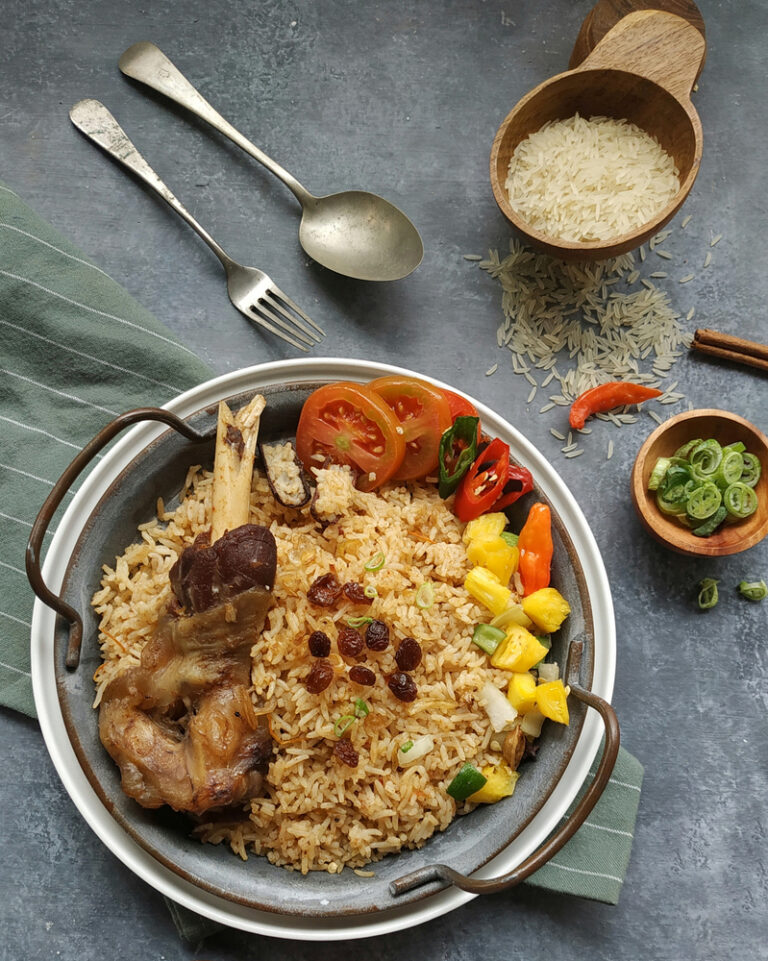
The Art of Preparation: A Labor of Love
Preparing Nasi Kebuli is a patient and deliberate process, a true labor of love that cannot be rushed. The method is designed to ensure that every component is perfectly cooked and that the flavors are deeply integrated.
- Cooking the Meat: The process begins by creating the flavorful broth. The spice paste and whole spices are sautéed in a generous amount of ghee until fragrant. The meat is then added and seared before being covered with water and simmered for hours. This slow cooking tenderizes the meat while creating a profoundly flavorful stock, the kaldu, which is the lifeblood of the dish.
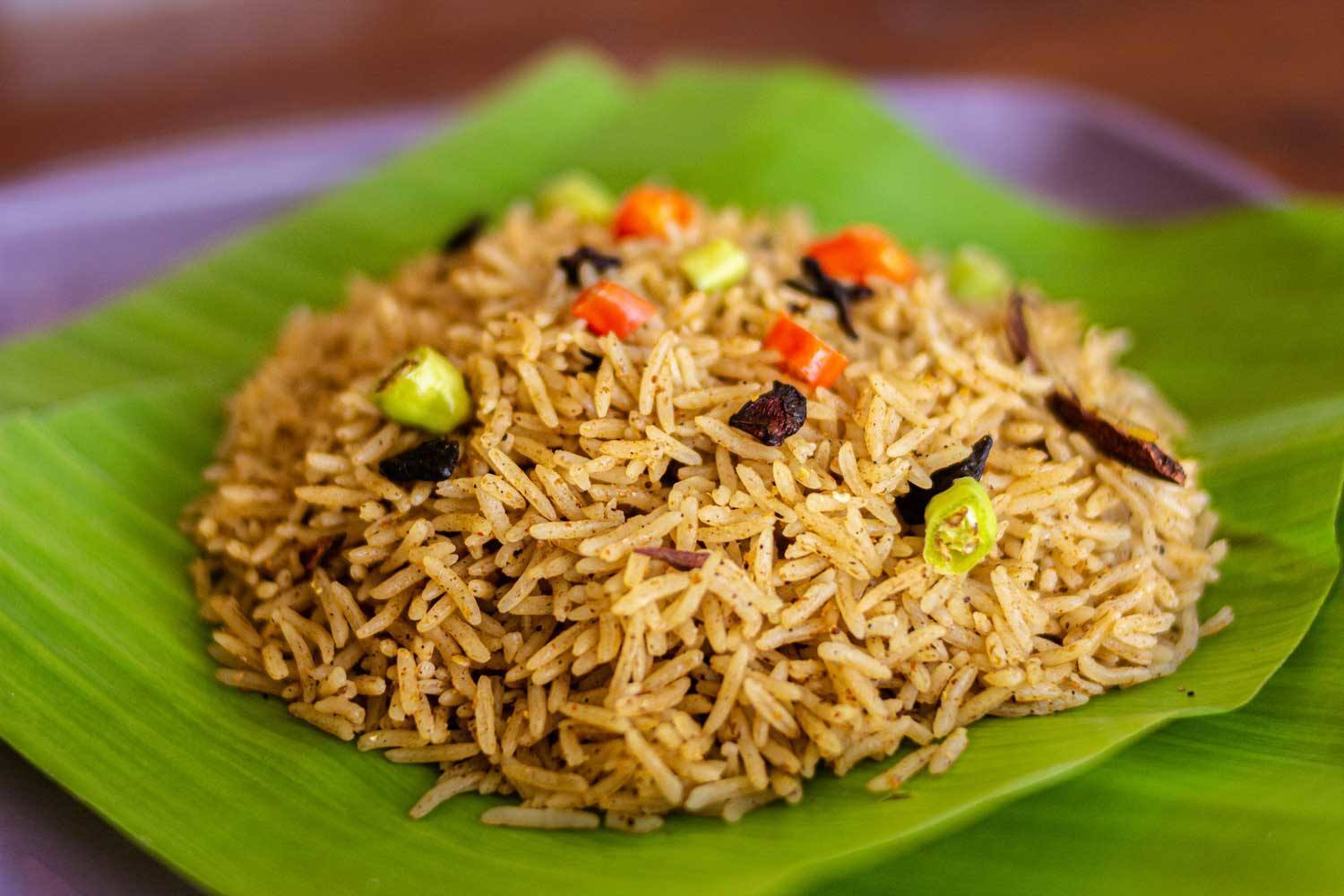
- Preparing the Rice: Once the meat is tender, it is removed from the pot. The rich broth is strained to remove the whole spices and aromatics. The Basmati rice, which has been washed and soaked, is then cooked in this golden, fragrant kaldu using an absorption method. The rice slowly soaks up all the meaty, spicy goodness, becoming plump and flavorful.
- The Finishing Touches: While the rice cooks, the tender meat is often given a final treatment to enhance its texture. It might be pan-fried or grilled briefly to create a slightly crispy, caramelized exterior that provides a delightful contrast to the soft rice.
- Plating and Garnishing: Nasi Kebuli is traditionally served on a large platter, or tampah, designed for communal sharing. The aromatic rice forms a mountain in the center, crowned with the pieces of tender meat. The dish is then showered with a variety of garnishes that add texture, color, and complementary flavors. The most common are crispy fried shallots (bawang goreng) for a savory crunch and sweet, chewy raisins (kismis) or dates, which provide delightful bursts of sweetness that cut through the richness.
To complete the experience, Nasi Kebuli is almost always served with a side of acar nanas—a fresh, tangy pickle made from pineapple, cucumber, and carrots. The acidity and sweetness of the pickle act as a perfect counterpoint to the rich, savory rice, cleansing the palate and making each bite as exciting as the first.
More Than Just Food: A Cultural Symbol
Today, Nasi Kebuli stands as a proud testament to Indonesia’s history as a cultural crossroads. It is a dish that tells a story of global connections, of how foreign influences are not just adopted but are embraced, transformed, and woven into the very fabric of local identity. Its association with religious festivals reinforces its role in community and faith, a dish that brings people together to give thanks and celebrate life.
While its roots are in the Middle East, Nasi Kebuli is undeniably Indonesian. It is a feast for the senses, a dish that nourishes the body and soul, and a delicious, aromatic reminder of the rich, layered history that makes the archipelago’s cuisine one of the most exciting in the world. To sit down to a platter of Nasi Kebuli is to partake in a royal tradition, a shared history, and a culinary legacy that continues to be cherished and celebrated across generations.

Nasi Kebuli – The rich and aromatic Indonesian dish. pictures collections gallery
Nasi Kebuli – The rich and aromatic Indonesian dish. is a nice pictures and stock photo for your computer desktop or your smartphone device (ipad, tablet, blackberry, iphone, and other device) and also for your personal use. Free available for desktop wallpaper or additional image collections for your all needs. And was uploaded by admit at date July 1, 2025. You can download it in your computer by clicking download button to save image... have nice day and have fun guys..
This 1 image in featured post from 0 Photos/images Gallery and awesome picture selections about Nasi Kebuli – The rich and aromatic Indonesian dish. is available to download. "Download & Save" images/pictures/wallpapers now and this Is one of the post that listed in packed to Category is Foods directory, with image dimension/resolution size is 1000 × 1000 px and size image/picture file is 237 KB with original link post ID is : https://powae.pw/of-course-here-is-a-1200-word-article-about-the-rich-and-aromatic-indonesian-dish-nasi-kebuli/. Get download/save images in post and gallery, "download" images or "preview" it on a bigger image for spesification sample in Large size (full attachment size) here : [Download & View to Large size]. Just Simple way, in thumbnail or in Gallery. *Click images to view Large Size.We collect this wonderful image from online and choose one of the best for you. Pictures collection that posted here was carefully chosen and published by author after choosing the ones which are best among the others. So, ultimately we make it and here these list of best image for your inspiration and informational reason regarding the Nasi Kebuli – The rich and aromatic Indonesian dish. as part of blogsite exclusive updates collection. So, take your time and find the best informations and pictures posted here that suitable with your needs and use it for your own collection and personal use. About Image information: Image has been submitted and You are able to give your opinion as evaluations to our web site value.
Don't forget to comment if you interest with this images, you can share this post to social media like as facebook, twitter, google+, pinterest, stumbleupon, and more. just click social media buttons for share this post Nasi Kebuli – The rich and aromatic Indonesian dish. Now. :)
Thanks for your visit, I hope you happy come to opo wae, wis opo wae, and get what you're looking for. And hope sometimes you will come back again here. All you need to do is help us develop by discussing this Nasi Kebuli – The rich and aromatic Indonesian dish. if you like it "leave your comment". have fun, Thank you.



